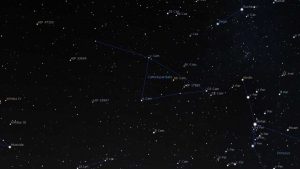| Meaning: | The Giraffe | Print out the star map from Sky and Telescope
Things to look for: Messier objects: Note: [x.x] indicates visual magnitude |
|
| Pronunciation: | kam uh low par’ dah liss | ||
| Associated Asterisms: | None | ||
| % of the sky: | 1.835 | ||
| Visible Stars: | 45 stars brighter than magnitude 5.5 |
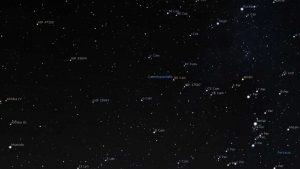

Camelopardalis is The Giraffe and is surrounded by well known constellation such as Ursa Major, Ursa Minor, Draco, Auriga, Cassiopeia and Perseus. Other neighbours Cepheus and Lynx are also lesser known. The constellation is circumpolar from the UK and reaches up to within 5 degrees of Polaris. It is a dim constellation ranking only 58th out of 88 and contains no Messier objects. None of its stars have friendly names, just their constellation designation.
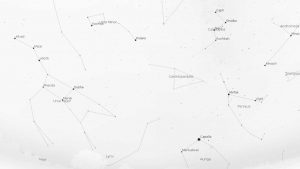
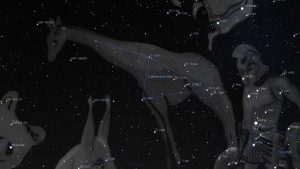
Camelopardalis is easy to find from either Ursa Major or Cassiopeia. Using Ursa Major, simply draw a line from Phecda to Dubhe and go that direction three times more to arrive in the body of the Giraffe made by α Cam, β Cam, γ Cam and BE. Follow the tips of the W of Cassiopeia from right to left to achieve the same end. There is no mythology surrounding the Giraffe. It first appeared in 1613 on a celestial globe by Dutchman Petrus Plancius and has remained ever since despite an attempt to unseat it. The name comes from Latin and means camel leopard or spotted camel.
William Herschel discovered the object that has become known as NGC2403. It is an intermediate, somewhere between spiral and elliptical; faint arms are visible but the central bulge is big. It is mag 8.0 and it is a quarter of a degree long (half the Full Moon). It belongs in the same group as M81 and M82 in Ursa Major.
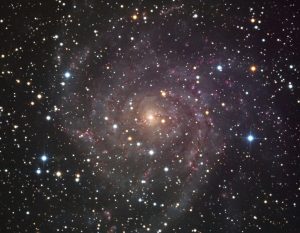
Looking out through Camelopardalis is just below the galactic plane and seeing galaxies beyond is hampered by intervening dust, the Zone of Avoidance. This means that several ‘nearby’ galaxies are obscured or hidden at visible wavelengths and so missed the Messier or NGC collation exercises of the 18th and 19th centuries. IC342 is 9.1 mag and is the brightest member of a group of galaxies that is next closest to us after the Local Group. It’s neighbours have been found using infrared telescopes and although difficult with all the dust, distances established.
The constellation does boast an annual meteor shower in May of each year called the Camelopardalids. The radiant is about 10 ° South of Polaris. There is also the October Camelopardalids at the beginning of the month with a lower zenithal hourly rate.

